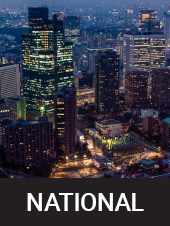When it comes to enforcing Canada’s security along the border that stretches 9,000 km, “things happen quickly,” says the RCMP’s head of serious and organized crime and border integrity.
In a Global News exclusive, The West Block‘s Mercedes Stephenson got the first access to the Black Hawk helicopters that are being wrapped and prepared for use on Canada’s border patrols as part of a bid to strengthen that security and respond to the U.S.‘s growing pressure to stop illegal border crossings and drug trafficking.
Mathieu Bertrand, chief superintendent and director general of serious and organized crime and border integrity for the RCMP, said the force has been assessing the force’s border capabilities since 2023, which was what allowed them to move quickly on leasing the Black Hawks.
He added the RCMP already had an existing number of nine helicopters, six of which were for patrolling the border, but the Black Hawks will increase their speed.
“Things happen quickly on the border,” he said. “As you can imagine on a 9,000-kilometre border there are some situations where we need to move our resources, we need to move our resources quickly. These choppers give us that ability.”
The RCMP had confirmed to Global News this week that two of the Black Hawk models would be operational as of Friday, with Staff Sgt. Rob Tan from the RCMP’s emergency response team telling Global News they would be conducting border patrols between Canada and the U.S. starting Sunday.

Get breaking National news
For news impacting Canada and around the world, sign up for breaking news alerts delivered directly to you when they happen.
“We’ll be doing surveillance, in coordination with our assets on the ground, border integrity enforcement, and take any actions that need to be taken,” Tan said.
“A lot of the austere environments and places we can’t reach conventionally, we’ll be able to observe them and deploy into those areas.”
However, Tan added that the Black Hawks allow those on board to fast-rope down without the helicopter needing to land, giving them the ability to extract and hoist to remove people as well.
He said officers have undergone training in preparation for using the helicopters, which will also allow for more people to operate on board or to have more people if enforcement is needed.
That capacity on the planes is a benefit, according to Sgt. Matthew Wells, national response team coordinator for the RCMP.
He said that the range of the Black Hawks depends on fuel, with the standard amount allowing them to travel about 590 kilometres, though the range can be extended to more than 2,000 kilometres if auxiliary tanks are added.
“By extending that range we can now move everybody we need and all the equipment we need in one helicopter, what would normally take two, three, four trips with one helicopter or multiple helicopters,” he said. “We can accomplish the same task and mission with one helicopter.”
In December 2024, the federal government said it is proposing a joint strike force and an “around the clock” aerial surveillance unit for ports of entry as part of its plan to tackle issues at the U.S.-Canada border amid growing pressure from Trump.
And in recent weeks, several provincial governments have announced their own responses, including Quebec which has said it was ready to deploy 300 officers at the border if illegal crossings into the U.S. rise.
Asked about border crossings of people going into the United States and if the RCMP could arrest them, Bertrand said border protection cannot be done just on “one side,” but having Canadian law enforcement “present” at the border is a benefit.
“By being present on the border, we can deter criminal activity from going into the United States,” Bertrand said.
Editor’s note: This story has been updated to correct the range of the aircraft.
© 2025 Global News, a division of Corus Entertainment Inc.
Read the full article here


